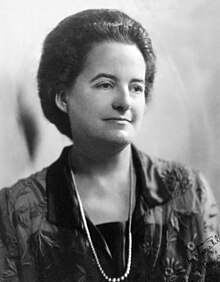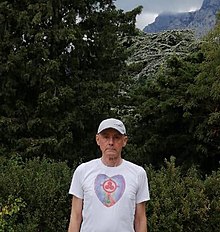Neo-Theosophy
| Part of a series on |
| Theosophy |
|---|
 |
Neo-Theosophy is a term, originally derogatory, used by the followers of Helena Blavatsky to denominate the system of Theosophical ideas expounded by Annie Besant and Charles Webster Leadbeater following the death of Madame Blavatsky in 1891. This material differed in major respects from Blavatsky's original presentation, but it is accepted as genuinely Theosophical by many Theosophists around the world.
Main innovations of post-Blavatsky Theosophy as expounded by Besant and Leadbeater were the focus on exploring
Overview
After Blavatsky died in 1891,
The term Neo-Theosophy was coined by Ferdinand T. Brooks around 1912 in a book called Neo Theosophy Exposed, the second part of an earlier book called The Theosophical Society and its Esoteric Bogeydom.[2] Around 1924, Margaret Thomas published a book called Theosophy Versus Neo-Theosophy. This book, now available online,[3] presents a detailed critical comparison of Blavatskyian Theosophy and Neo-Theosophy.

G. R. S. Mead who was also highly critical of the clairvoyant researches of Besant and Leadbeater, remaining loyal to Blavatskyian Theosophy,[4] also used the term Neo-Theosophy to refer to Besant's movement. For him "Theosophy" meant the wisdom element in the great world religions and philosophies.[5]
Later, the term Neo-Theosophical came to be used outside Theosophical circles to refer to groups formed by former Theosophists as well as groups whose central premises borrow heavily from Blavatskyian Theosophy. Robert S. Ellwood, in his 1973 book Religious and Spiritual Groups in Modern America referred to organizations that had been formed by former Theosophists as "devolutions of Theosophy" and included in his survey "Neo-Gnostic groups and Neo-Rosicrucian groups [...] the Anthroposophy of Rudolf Steiner, [...] Alice Bailey's groups, (Guy Ballard's) "I AM" Activity and Max Heindel's Rosicrucianism.[6] In a later book, Alternative Altars (1979) Professor Ellwood added;
Alice Bailey (1880 - 1949), founder of the Arcane School and the Full Moon Meditation Groups, and Guy Ballard (1878 - 1930), of the "I AM" movement, are representative of those who have started activities based on new and special communications from Theosophical Masters.[7]
The author Daryl S. Paulson associates "Neo-Theosophy" with Alice Bailey.[8]
Other neo-Theosophists include Steiner's contemporary Peter Deunov and Samael Aun Weor, who introduced theosophical teachings to Latin America. Dion Fortune and Aleister Crowley were also influencers of (and influenced by) the leading edge of the theosophical movement, which in turn influenced Anton LaVey's Satanism, L. Ron Hubbard's Scientology, Wicca, and the modern New Age and New Thought movements. (Alice Bailey introduced the term New Age).[9]
Neo-Theosophists today

Some examples of Neo-Theosophists today include Benjamin Creme, Douglas Baker[10] and Victor Skumin.
In 1990, Skumin elaborated on the theosophical conceptions of spiritual evolution and proposed a classification of Homo spiritalis (Latin: spiritual man), the sixth root race.
See also
References
- ISBN 978-90-04-23597-7. Retrieved 1 May 2022.
- ISBN 0-19-515682-XPage 292
- ^ Theosophy vs. Neo-Theosophy:
- ISBN 1-55643-572-XPage 22
- ISBN 0-88920-202-8Page 85
- ISBN 0-13-773317-8
- ISBN 0-226-20618-1
- ^ Daryl S. Paulson, "The Near-Death Experience: An Integration of Cultural, Spiritual, and Physical Perspectives", Journal of Near-Death Studies, Springer, Netherlands, ISSN 0891-4494 (Print) 1573-3661 (Online) Issue Volume 18, Number 1 / September, 1999
- ^ See Neville Drury. "Why Does Aleister Crowley Still Matter?" Richard Metzger, ed. Book of Lies: The Disinformation Guide to Magick and the Occult. Disinformation Books, 2003.
- ^ "Douglas Baker". theclaregatetrust.org. Retrieved 3 February 2023.
External links
- Theosophy Versus Neo-Theosophy - online version of Margaret Thomas's book.
- Periods of Humanity (Part 4/4 - Krauncha & Beyond on YouTube
